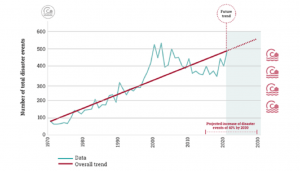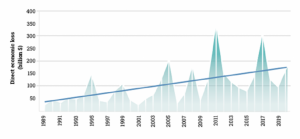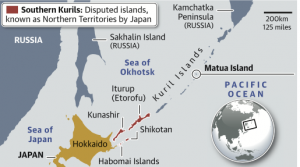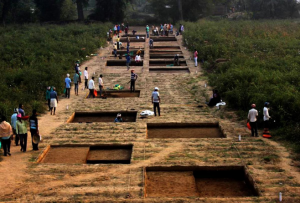Table of Contents
GEOGRAPHY: NATURAL RESOURCES
1. GLOBAL COAL PLANT CAPACITY DIPS IN 2021
THE CONTEXT: According to a report by the Global Energy Monitor, Global coal-plant capacity under development declined in 2021, which conducts an annual survey of coal power capacity under development or deployment. China leads in coal power expansion, with about 25,000 MW in new coal plants, followed by India with around 6,100 MW.
THE EXPLANATION:
After rising in 2020 for the first time since 2015, total coal power capacity under development declined 13% last year, from 525 gigawatts (GW) to 457 GW, a record low. 1 GW is 1,000 MW.
- Thirty-four countries have new coal plants under consideration, down from 41 countries in January 2021. China, South Korea, and Japan have pledged to stop funding new coal plants in other countries, but China continued to lead all countries in domestic development of new coal plants, commissioning more coal capacity than the rest of the world combined.
- In all, 45,000 MW of global coal power capacity — a little over half of which was from China — was commissioned in 2021 while 26,8000 MW was retired, causing a net increase in the global coal fleet of 18,200 MW. In 2020, the net increase was 11,500 MW, which was the result of 56,800 MW in new capacity and 45,300 MW of global retirements.
- The report comes on the back of an influential report earlier this month from the Intergovernmental Panel on Climate Change (IPCC), which showed there was no carbon budget left to accommodate new coal plants, and that coal use needed to fall by 75% by 2030 (from 2019 levels) to limit global temperature rise below 1.5 degrees Celsius, in line with the Paris Agreement.
Watershed year
- 2021 was a significant year in the continued global shift away from new coal power, with multiple countries making significant public commitments to pivot their energy futures and swathes of pre-construction coal capacity cancelled.
- In all, 65 countries have made commitments not to build new plants — up from 36 in January 2021. This is almost a doubling of the number of countries turning away from new coal in just a single year. Many countries have now scrapped their proposed coal projects and several others have indicated their intent to do the same.
- The European Union’s 27 member states retired a record 12.9 GW in 2021, with the most retirements in Germany (5.8 GW), Spain (1.7 GW), and Portugal (1.9 GW). Portugal became coal free in November 2021, nine years before its targeted 2030 phase-out date.
- There has been a 77% fall in coal plant capacity in pre-construction since the Paris Agreement was signed in 2015.
On track in India
- However, India has also insisted that its right to use coal be recognised in the context of principles of climate justice. From 2015 to 2021, pre-construction coal power capacity in the country decreased nearly 90%, from approximately 238.6 GW in 2015, to 36.6 GW in 2020 — and down an additional 12.7 GW in 2021, to 23.8 GW. 1 GW is 1000 MW.
- Despite the phase-down of new coal, more than 23.8 GW of planned capacity remains, with more than half (12.6 GW or 52%) permitted; 31.3 GW under construction; and few if any plants with firm retirement dates. The Environment Ministry has introduced more stringent pollution standards for coal plants in 2015, but the deadline to comply with the standards has been repeatedly delayed.
2. RETHINK SAND USE, MOVE TO CIRCULAR ECONOMY: UNEP
THE CONTEXT: The report released by UNEP’s Global Resource Information Database-Geneva team provides necessary guidance gathered from world experts to switch to improved practices for the extraction and management of soil.
THE EXPLANATION:
- The world needs to rethink the extraction and use of sand, the second-most used resource globally, the United Nations Environment Programme (UNEP) highlighted in a new report.
- Extracting sand where it plays an active role, such as rivers and coastal or marine ecosystems, can cause a series of damages to the environment, according to Sand and Sustainability: 10 strategic recommendations to avert a crisis. The damages include
- Erosion
- Salination of aquifers
- Loss of protection against storm surges
- Impacts on biodiversity
These challenges pose a threat to livelihoods through water supply, food production, fisheries, or to the tourism industry, the report said.
- Around 50 billion tonnes of sand and gravel is used every year, which is enough to build a wall 27 metres wide and 27 metres high around Earth, according to UNEP. Sand is being used faster than it can be naturally replenished, so its responsible management is crucial, it added.
- Sand must be recognised as a strategic resource, not only as a material for construction, but also for its multiple roles in the environment, said the authors of the report.
- They stressed that governments, industries and consumers should price sand in a way that recognises its true social and environmental value.
- Extraction of sand from beaches should be banned due to its importance for coastal resilience, the environment and the economy, the report recommended. It is the “most cost-effective strategy for adapting to climate change due to how it protects against storm surges and impacts from sea level rise”, the body observed.
- An international standard on how sand is extracted from the marine environment should be developed, UNEP proposed in the report. This can bring about dramatic improvements as most marine dredging is done through public tenders open to international companies.
- The need for new institutional and legal structures for better governance of the resource and involvement of stakeholders and need for “place-based approaches” for better management of the resource, the report underlined.
- Sand provides “breeding grounds for diverse flora and fauna, and it also plays a vital function in supporting biodiversity, including marine plants that act as carbon sinks or filter water”, the report said, stressing why sand is important for sustaining life on earth.
- Solutions exist for moving towards a circular economy for sand, such as banning the landfilling of mineral waste and encouraging sand to be reused in public procurement contracts, the report highlighted.
- Alternatives to sand like crushed rock or recycled construction and demolition material, as well as ‘ore-sand’ from mine-tailings can also help in the transition.
THE HEALTH ISSUES
3. CHINA REPORTS FIRST HUMAN CASE OF H3N8 BIRD FLU
THE CONTEXT: According to the country’s health authority, China has recorded the first human infection with the H3N8 strain of bird flu, but the risk of it spreading among people was low.
THE EXPLANATION:
- According to the country’s health authority, the H3N8 variant has previously been detected elsewhere in the world in horses, dogs, birds and seals but no human cases of H3N8 have been reported.
- China has huge populations of both farmed and wild birds of many species, creating an ideal environment for avian viruses to mix and mutate.
- Avian influenza occurs mainly in wild birds and poultry. Cases of transmission between humans are extremely rare.
Background:
- The H5N1 and H7N9 strains of bird flu, detected in 1997 and 2013, respectively, have been responsible for most cases of human illness from avian influenza, according to the US Centres for Disease Control.
- Human infections of zoonotic, or animal-borne, influenzas are “primarily acquired through direct contact with infected animals or contaminated environments, but do not result in efficient transmission of these viruses between people”, according to the World Health Organisation.
- In 2012, H3N8 was blamed for the deaths of more than 160 seals off the north-eastern coast of the United States after it caused deadly pneumonia in the animals.
Value Addition:
What is avian influenza?
- Avian Influenza is a highly contagious viral disease that affects both domestic and wild birds. Avian Influenza viruses have also been isolated, although less frequently, from mammalian species, including rats, mice, weasels, ferrets, pigs, cats, tigers, dogs and horses, as well as from humans.
- Circulation of avian influenza viruses is not a new phenomenon. There are many descriptions of historical outbreaks of avian influenza disseminating within domestic poultry flocks in the literature. AI occurs worldwide and different strains are more prevalent in certain areas of the world than others.
- Avian influenza (AI) is a highly contagious viral disease affecting several species of food-producing birds (chickens, turkeys, quails, guinea fowl, etc.), as well as pet birds and wild birds. Occasionally mammals, including humans, may contract avian influenza. There are many AI virus strains, which are usually classified into two categories, low pathogenic (LPAI) strains, which typically cause few or no clinical signs in poultry and highly pathogenic (HPAI) strains, which can cause severe clinical signs and potentially high mortality rates among poultry
There are 4 types of influenza:
- Influenza A viruses infect humans and many different animals. The emergence of a new and very different influenza A virus with the ability to infect people and have sustained human-to-human transmission can cause an influenza pandemic.
- Influenza B viruses circulate among humans and cause seasonal epidemics. Recent data showed seals also can be infected.
- Influenza C viruses can infect both humans and pigs but infections are generally mild and are rarely reported.
- Influenza D viruses primarily affect cattle and are not known to infect or cause illness in people.
THE ENVIRONMENT, ECOLOGY, AND CLIMATE CHANGE
4. EXPLAINED: WHY IS MAHARASHTRA EXPERIENCING A HEATWAVE AGAIN?
THE CONTEXT: A heatwave has gripped the Vidarbha and Marathwada regions of Maharashtra. This is the fourth heatwave in the last two months and the second in April 2022.
THE EXPLANATION:
The state’s highest maximum temperatures (in degrees Celsius) were recorded at Brahmapuri (44.7), followed by Akola (44.5), Chandrapur and Wardha (44.4 each), Gondiya (43.5), Amravati (43.2), Nagpur, Washim and Parbhani (43 each), Ahmednagar (42.3) and Solapur (41.4).
What is a heatwave?
- A region is under the grip of a heatwave if the maximum temperature reaches at least 40 degrees Celsius or more in the plains and at least 30 degrees Celsius or more in hilly regions. When the maximum temperature departure ranges between 4.5 and 6 degrees, the India Meteorological Department (IMD) declares a heatwave.
- A severe heatwave is declared when the recorded maximum temperature of a locality departure from normal is over 6.4 degrees Celsius. Also, if an area records over 45 degrees and 47 degrees Celsius on any given day, then the IMD declares heatwave and severe heatwave conditions, respectively.

Lack of pre-monsoon showers
Except for the southern peninsula and northeast regions, the weather has remained dry across the rest of the country. Once, in the last week, parts of Jammu and Kashmir and Delhi reported light to moderate rainfall. The lack of pre-monsoon showers has also led to an increase in the overall maximum temperature. Maharashtra recorded 63 per cent deficient rainfall from March 1 to April 26, 2022.
What’s the weather forecast for Maharashtra?
- The IMD has said heatwave conditions are very likely to prevail in isolated pockets of Madhya Maharashtra, Marathwada and parts of Vidarbha. Maximum temperatures will remain above normal to appreciably above normal during this season.
5. WORLD WILL FACE AT LEAST 560 CLIMATE DISASTERS EVERY YEAR BY 2030, WARNS UN
THE CONTEXT: According to a new report released by United Nations, the world will face around 560 disasters every year by 2030.
THE EXPLANATION:
- The world has experienced 350-500 medium- to large-scale disasters every year over the last 20 years, said the report published March 26, 2022. This is five times higher than the previous three decades, the Global Assessment Report (GAR 2022) released by the United Nations.
- The rapid rise in the disaster frequency can be attributed to climate change and inadequate risk management, according to the intergovernmental organisation. The UN Office for Disaster Risk Reduction (UNDRR) released the report ahead of the Global Platform for Disaster Risk Reduction in May, 2022.

- Poor governance and risk management systems are fundamentally underestimating true global risk and putting all our socio-economic gains in danger, it noted.
- As the Midterm Review of the Sendai Framework is underway, this report should be a wake-up call that countries need to accelerate action across the Framework’s four priorities to stop the spiral of increasing disasters.
Poverty burden will increase
- The frequent disasters will add to the poverty burden of the world, the report said. An additional 37.6 million people are estimated to be living in conditions of extreme poverty due to the impacts of climate change and disasters by 2030, it noted.
- A “worst case” scenario of climate change and disasters will push an additional 100.7 million into poverty by 2030, according to UN.
- The poorest are most vulnerable and will bear the brunt of the disasters, the analysis noted citing the INFORM Natural Hazard Risk Index.
- A majority of countries that face a high disaster risk are also among those with the highest share of population living under the national poverty line, it said.
- These include the Philippines, Bangladesh, Myanmar, India, Indonesia, Pakistan and Vietnam from the Asia-Pacific region.
Around 90 per cent of the countries which are at a high risk according to the INFORM Natural Hazard Risk Index are middle- and lower-income countries, with an average national poverty rate of 34 per cent.
- In comparison, the countries which are supposedly under “low risk” have a poverty rate of less than one per cent.
- The poor are affected the most because of their high dependency on outdoor work like in agriculture or reliability on natural capital, both of which are vulnerable to a changing climate.
- With inadequate financial means to adapt, the poorest are most vulnerable in both the developing and developed nations, the UN report said.
Developing nations most vulnerable, not insured
- Annual direct economic loss from disasters has more than doubled over the past three decades. It increased to over $170 billion in the 2010s from an average of around $70 billion in the 1990s.
- Just 40 per cent of all disaster-related losses were insured between 1980 and 2018.
- This means, 60 per cent of all disaster-related losses were not insured. Once again, there exists a wide inequality between the developed and developing nations.

Direct economic loss
- Global warming reaching 1.5 degrees Celsius in the near-term will cause unavoidable increases in multiple climate hazards and present multiple risks to ecosystems and humans, said the IPCC report Climate Change 2022: Impacts, Adaptation and Vulnerability.
- Around $170 billion per year has been the average cost of the natural disasters over the last decade, according to UN. Low-income and lower-middle income lose, on average, one per cent of their national GDP to disasters every year, compared to 0.1 per cent and 0.2 per cent in high-income countries and upper middle-income countries respectively.
- Of these, the greatest share of economic loss is borne by countries in the Asia and Pacific region, where the countries lose on average 1.6 per cent of GDP to disasters each year.
- Africa is the second-most affected region, losing an average of 0.6 per cent of GDP to disasters, the UN estimated.
- The first four months of 2022 have been devastating for Africa, which faced at least six major climate-led disasters, including the recent floods in South Africa, the body noted.
The damaging floods in KwaZulu-Natal province of South Africa followed three tropical cyclones and two tropical storms that hit South-East Africa in just six weeks of the year.
Building back better
- A range of sectors, including the financial, governmental, development, insurance and risk management sectors, can stop this spiral of self-destruction and safeguard the future of the planet amid rising risks, the report suggested.
- Insurance is a key tool to adapt for building back from disasters, reminded the report. It is a wake-up call to adapt to “climate emergency” by estimating the disaster losses better, and insuring them.
- The recommendations in the report were built on the Glasgow Pact of the 26th Conference of Parties to the United Nations Framework Convention on Climate Change that called for doubling of finance to support developing countries in adapting to the impacts of climate change and building resilience.
- ‘Climate action failure’ has been identified as the number one global risk with potentially the most severe impact over the next decade, according to the World Economic Forum.
- Lack of data will be a major obstacle to addressing the risks which are not measured well, the UN report flagged. “The basic data-collection systems of most countries are not yet able to fully track the extent of disaster damage and loss, the organisation noted.
- According to UN, there is also the need for governments and the financial industry to improve accounting of the financial assets at risk under various future climate change scenarios. Financial systems, including insurance, must be reworked to account for the real costs of risk, particularly long-term risks.
THE SCIENCE AND TECHNOLOGY
6. CARBON DATING FINDS ASURGARH IS ODISHA’S OLDEST FORTIFIED SETTLEMENT
THE CONTEXT: The Asurgarh fortified settlement, which was excavated by the Archaeological Survey of India (ASI) in Odisha’s Kalahandi district, has been ascertained to be the oldest among the major fortified settlements in the State. It dates back to the ninth century BC.
THE EXPLANATION:
- To determine the age of the ancient settlement, archaeologists deployed the Accelerator Mass Spectrometry (AMS) radiocarbon technique, which established the Asurgarh era as spanning over three cultural phases from ninth century BC to second-third century AD.
- The Asurgarh era has been compared with early historic sites in Odisha such as Sisupalgarh (near Bhubaneswar); Jaugarh, a fortified settlement on the Rushikulya valley (Ganjam); Manamunda (Boudh); Khalkattapatna (Puri); the port site of Manikpatna (Puri); Radhanagar (Jajpur); Kharligarh (Balangir) and Budhigarh (Kalahandi). Excavations were carried out by scholars to find parallels with early civilisations such as the Harappan Civilisation.
- Modern carbon dating methods have not been used to determine age in any of the other excavation sites.

- The analysis of artifacts and materials suggest that local inhabitants might have started to carve out a rural settlement in the landscape around ninth century BC.
- Subsequently, the settlement might have expanded along with development of iron metallurgy between fourth century BC to second century AD. This era was contemporary to the Mauryan period. During second century AD to third-fourth century AD, the fortified settlement is believed to have lost steam. “It might have declined due to the territorial expansion of a neighbouring State like the Satavahana and early Gupta dynasties, or due to ecological changes.
- According to Archaeologist, a total number of 417 antiquities have been retrieved from the site. Beads of coral, lapis lazuli, carnelian, glass, jasper, garnet, shell, agate, milky quartz, terracotta, kaolin, and soft stone, and circular discs made out of potsherds and stone, form the richest collection among the antiquities.
- Apart from charcoal samples being tested by the AMS radiocarbon technique, there were relative dated objects such as a silver punch-marked coin of imperial variety, and bricks and terracotta roof tiles found at the site.
VALUE ADDITION:
What is Carbon Dating?
Radiocarbon dating or carbon dating or carbon-14 dating is a method for determining the age of an object containing organic material by using the properties of radiocarbon, a radioactive isotope of carbon. Unstable carbon-14 gradually decays to carbon-12 at a steady rate
How does it work?
- Radiocarbon dating works by comparing the three different isotopes of carbon. Isotopes of a particular element have the same number of protons in their nucleus but different numbers of neutrons. This means that although they are very similar chemically, they have different masses.
The total mass of the isotope is indicated by the numerical superscript. While the lighter isotopes 12C and 13C are stable, the heaviest isotope 14C (radiocarbon) is radioactive. This means its nucleus is so large that it is unstable.
THE PRELIMS PRACTICE QUESTIONS
QUESTIONS OF THE DAY
Q1. Consider the following statements about coal-based power plants in world:
- Coal-plant capacity under development declined continuously in last five years.
- In 2021, India had largest expansion of coal power followed by China.
Which of the statements given above is/are correct?
a) 1 only
b) 2 only
c) Both 1 and 2
d) Neither 1 nor 2
ANSWER FOR 26TH APR 2022
1. Answer: D
Explanation:
- Cost disease also known as Baumol’s cost disease, refers to the increase in the wages of certain labourers even though their productivity or skill level has not risen commensurately.
- This happens because there is competition between various industries for the limited supply of labour. So, even if the productivity of their employees has not risen significantly, employers in many cases have no choice but to pay higher wages in order to prevent the movement of labourers to other higher-paying industries.
- Let’s take the case of an agricultural economy where wages are at a certain level. Now suppose that a manufacturing industry suddenly crops up and bids labour away from the agricultural sector. This will raise the wages of labourers and employers in the agricultural sector will have no choice but to pay higher wages to prevent all their labour from moving into the manufacturing industry.
2. ANSWER: A
EXPLANATION:
Please Refer the Map



